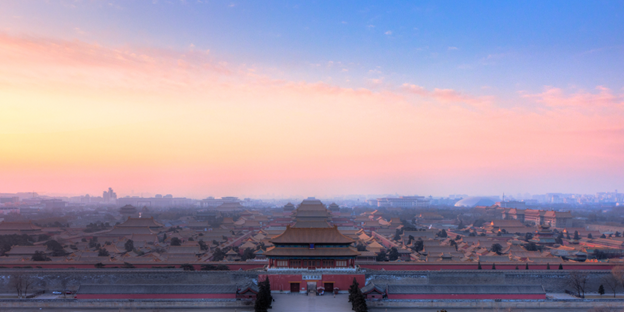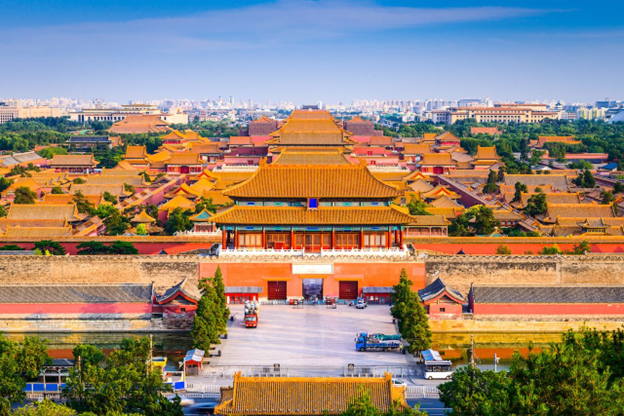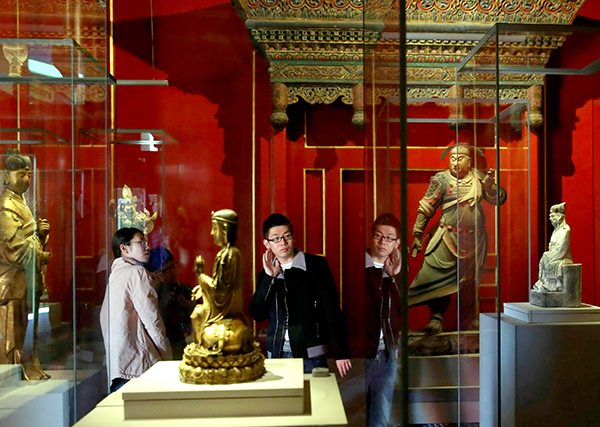THE FORBIDDEN CITY

Have you ever been prohibited from doing something? It’s likely, as many adults limit certain activities to ensure children’s safety. Surprisingly, a place in China was forbidden for centuries. This place is called the Forbidden City, which is now accessible to tourists. Let’s explore why it was off-limits for so long!
Constructed between 1406 and 1420, the Forbidden City served as the Chinese imperial palace for nearly 500 years. The area was the hub of the Chinese government, where emperors from the Ming to the Qing Dynasties resided. Today, the Forbidden City still stands in the heart of Beijing.

One might wonder why it’s called the Forbidden City, given that it was an imperial palace. However, it was no ordinary fortress, as it comprised nearly 1,000 buildings spread across almost 8 million square feet. The name “Forbidden City” originated from the Chinese phrase “Zijin Cheng,” meaning “Purple Forbidden City.” The color purple symbolized the North Star, which, according to Chinese astrology, was the residence of the Celestial Emperor.
The Forbidden City represented the earthly counterpart of the North Star, serving as the home of the earthly emperor. It was “forbidden” because it was a walled city, where no one could enter without permission.
The Forbidden City was the residence of 24 different rulers, with the last one being Puyi, the final Emperor of China. After relinquishing his position in 1912, the Forbidden City was no longer the political center of China.
The Forbidden City is an exemplary display of traditional Chinese architecture, influencing architects worldwide for centuries. It’s enclosed by a 26-foot-high and almost 30-feet wide wall at its base. The city’s moat is over 170 feet wide and more than 20 feet deep, providing security to the emperors.
The Forbidden City’s design reflects the principles and beliefs of the ancient Chinese rulers, such as yellow being the color of the Emperor. Almost all roofs in the Forbidden City were covered with yellow glazed tiles.
In 1987, the Forbidden City was recognized as a World Heritage Site, housing over one million rare Chinese artworks and artifacts at present. Most of these pieces date back to the Ming and Qing dynasties, making it one of the world’s largest collections of ancient wooden structures.
WHY IS THE FORBIDDEN CITY IMPORTANT?

The Forbidden City stands as a unique imperial architectural complex in China, representing the country’s ancient official architecture with its exceptional construction techniques and craftsmanship. As the sole surviving and exemplary imperial palace, it is a precious gem in the history of Chinese architecture.
The Meridian Gate or Gate of Divine Prowess hosts occasional exhibitions that showcase China’s top relics and precious artworks from other countries, such as the Cartier Craftsmanship and Restoration Exhibition that was held in June and July of 2019. Through such displays, it serves as a platform that facilitates cultural exchanges between China and other nations.
During the early Ming Dynasty, the capital of China was situated in the southern city of Nanjing instead of the northern city of Beijing. However, due to the constant threat of northern nomads, the third Ming emperor, Zhu Di, made the decision to move the capital to Beijing and construct the Forbidden City, thus relocating the political center to the north for better protection of the northern border.
Today, the Forbidden City serves as a museum, showcasing the art and artifacts of the imperial era. Visitors can explore the palace complex and view exhibitions of Chinese art, calligraphy, and ceramics. The Forbidden City is a testament to China’s rich cultural heritage and its history as a global superpower.




